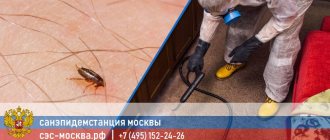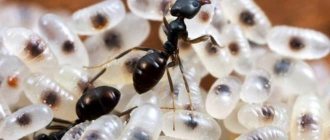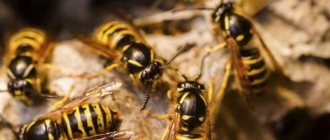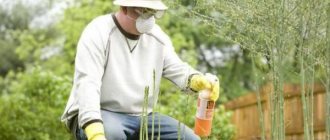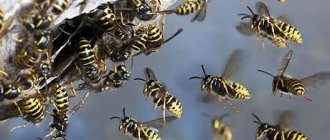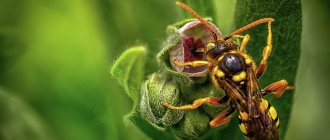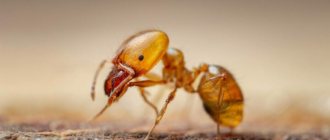The wasp is an arthropod insect from the order Hymenoptera, suborder - stalked belly. This is an amazing, interesting creature.
Its body is colored with transverse alternating yellow and black stripes, its length depends on the variety and is 2-3.5 cm.
The wasp has two pairs of wings on its back; they are connected, so if you don’t look closely, it seems that there are not four wings, but two.
There are many varieties of these insects; in addition to real wasps, there are also species such as sand wasps, glitter, scolia, road wasps, typhus, German, burrowing, flower, paper. Hornets are also wasps.
Wasps bite painfully, and getting their venom under the skin is fraught with swelling and serious allergies, but after a wasp sting, its sting does not remain in the wound, as happens after a bee sting.
Origin of the species
Insects have no specific scientific definition. Wasps include all stinging stalked bellies belonging to the order Hymenoptera. These insects are not classified as either ants or bees.
At the moment, there is a wide variety of wasp species. These include: road, sparkles, as well as scolias, paper, hornets and so on. All varieties are conditionally divided into:
- Single insects.
- Social insects.
Interesting fact : bees are able to defend themselves only with a sting, while wasps additionally use a powerful jaw apparatus. When in danger, wasps bite quite painfully.
Basin
Between the belly and chest the insect has a thin “waist”. In this way they fold the body almost in half.
They use this feature exclusively for hunting. They also use their sting to get food. This part of the body structure is the ovipositor. It is located at the end of the abdomen. Through it, poison is released, which is destructive for small victims and painful for humans. But wasps can also use their jaws to hunt.
Description
A wasp builds a nest.
Solitary wasps live separately. They personally build nests of strange shapes. All adult insects can reproduce. Nests are built in secluded corners: in spaces between walls, under roofs, in the soil. Only some species live without building nests. These wasps live in naturally created wood holes.
Social varieties live in large families. The nest is built by the queen, and not every adult insect can reproduce. In some cases, several thousand individuals live in such colonies, and only the queen can reproduce. Infertile wasps are classified as workers, while fertile ones are called queens.
Interesting fact : most Hymenoptera are able to change their lifestyle from solitary to social. This process is carried out in several stages.
Appearance
Wasp with a sting
Wasps are extremely bright insects that attract the eye. They have a characteristic coloring - black and yellow transverse stripes. Adult insects grow up to 10 cm. Some females grow up to 18 cm. Small hairs are located along the body of the animal. The body ends with a sharp sting. The sting is short and smooth, which allows it to easily pierce the body of an enemy. The victims are able to move, so wasps sting in any position.
Wasp eyes
Insects have compound eyes. They are quite large compared to the body and can distinguish objects within a radius of 180 degrees. Three additional eyes are located on the top of the head. However, they are practically invisible to the naked eye. Whiskers are located near the small eyes. Their purpose varies depending on the insect's activity and certain situations. Wasps mainly rely on these antennae during flight. They serve as a guide for determining the direction of the wind, the size of the cracks, etc.
Interesting fact : since wasps have a smooth sting, they do not injure themselves when attacking.
Body structure
The body of a wasp consists of a head, torso, legs and wings.
The eyes have a special structure - they consist of a large number of plates - facets, this makes it possible to see simultaneously in all directions. The eyes are bulging and protrude above the head.
But besides these eyes, wasps have three more eyes, located at the top of their heads. It’s hard to believe that a wasp is so big-eyed, but you can easily be convinced of this by examining the wasp’s head in a close-up photo.
The wasp’s antennae are also a device for measuring cells when building a nest.Multifunctional antennae grow on the head - they are needed for smell and touch, the wasp uses them to detect air movement, and they also work as taste buds.
Only females have a sting - in females it plays the role of an ovipositor, and in case of danger, the insect uses it as a weapon - releasing poison through it into the body of its enemy.
Peculiarities
The name insects is a collective name for many species. The external characteristics of many wasp species differ significantly. The most common are: Paper wasps. The most familiar to people. They live near humans, standard black and yellow color. Sparkles. The wasps are medium-sized, growing up to 8 cm, and also have a standard color. Floral. These insects are extremely small. They do not grow larger than a centimeter. The color is standard with a predominance of yellow. German women. Insects with a specific color. Their body color is bright orange. Such wasps immediately catch the eye. Males are black and orange in color with black wings. Females are wingless, which is why they received the nickname velvet ants.
Habitat – where do wasps live?
Habitat of the common
wasp Animals can be found all over the planet. These insects have settled across all continents. They are available in all CIS countries, Europe, Africa, Asia and America. Insects cannot be found only in the vast expanses of the Sahara, in the Arctic, and also in the Arabian Peninsula. Insects like to settle in temperate climates. Hot and frosty regions do not allow wasps to survive.
Interesting fact : in the territory of the People's Republic of China and Japan there is an extremely dangerous species of these insects. Asian hornets grow up to 6 cm and can kill an adult with one bite. They are especially dangerous for allergy sufferers. Every year in these countries, up to 50 people die after being stung by this hornet.
Most insects are found in the northern hemisphere of the planet. Some are found in Brazil. Insects choose housing based on criteria: the presence of plants where they can hide, people and a temperate climate. Living near people allows wasps to get food faster. You can live in trees and build nests from wood. Some species build nests from clay or small stones. Externally, these houses look like small castles.
Interesting: Can a bumblebee bite?
Legs and paws
The wasp has three pairs of legs. They are attached to the lower part of the body. Each of them consists of five so-called segments. These are the pelvis, thigh, thigh, lower leg and foot. The latter also consists of five parts. The connection of all of the above occurs with the help of a chitin film. The legs are very mobile, they have muscles.
What does it eat?
Wasps eat
Wasps have a varied diet, depending on several factors: the type of insect, what stage of development it is at and where it lives. People think that wasps don't care what they eat, but in reality this is not the case. Insects feed on meat, fish, berries or sweets. However, these products do not constitute the main diet of insects.
Wasps love soft but liquid food . They eat fruit pulp, drink plant sap, eat berries and drink flower nectar. If possible, wasps may eat human food. Insects search for food thanks to their developed sense of smell. They can easily detect slightly rotten or fermented fruits. Animals also love beer or kvass. Some of the wasp's food is taken to the larvae or queen. Such work falls on the shoulders of working individuals.
Wasp on the hunt
Predatory wasps feed differently. They rarely drink nectar, and most of the time they hunt for other insects. They can even kill small spiders. They feed the larvae with insects. The pre-predatory wasp stalks the potential victim, after which it attacks it with its stinger, paralyzing it. The poison helps keep the victim fresh.
Features of character and lifestyle
The ownership of an animal greatly changes its lifestyle. Solitary wasps live a monotonous life, actively engaged in providing supplies for the larvae. Their nests have separate compartments for prey, where it is stored for feeding the offspring. Subsequently, the larvae develop independently.
Wasp nest
Social wasps lead more eventful lives. In the spring, the queen finds a place where she creates a house. She lays eggs in the nest, and then takes care of the emerging larvae. With the first brood, the queen gets rid of her worries. The nest is now tended by worker wasps. They build the nest further and get food. The queen, in turn, continues to leave offspring.
OS work at night
Some people believe that wasps and bees sleep at night. However, in reality everything is completely different. Insects only need a few minutes a day to rest. They never sleep at night. The nests are constantly busy. The wasps gradually chew the bark, and in the morning they build new honeycombs with the resulting material.
Interesting fact : males do not live more than two weeks. Most often they die some time after mating with the queen.
Most representatives of wasps have a bad character. They will never attack first, but will sting at the slightest disturbance. The smell of wasp poison is sensed by relatives, so it is best for the victim to move away from the nest before an entire colony attacks it. The wasps unite and jointly confront their enemies.
Lifestyle and habitat
Wasps can be found almost everywhere, in almost every corner of the planet, with the exception of areas that are particularly unsuitable for life. They prefer to settle close to humans, because in the immediate vicinity of people and their homes there is always something to eat.
Now it's time to talk more about the social structure inherent in paper wasps. It is these representatives of the diversity of species already described that should be given special attention, because when they talk about wasps, they usually mean wild social wasps. Although this is not entirely correct.
The groups in which these insects gather to live together are close-knit families called colonies. They can have up to 20 thousand members. In such families there is a clearly established social structure and division into castes with a certain range of responsibilities.
The uterus is engaged in breeding offspring. Worker wasps look after the larvae, feed the rest of the family and guard the common home. The queen builds a nest out of a paper-like material.
It is produced naturally by wasps themselves, by grinding wood and mixing the material with their own saliva. Powerful jaws help these creatures build nests.
With these, the queen is capable of finely grinding hard wood. Worker wasps and drones are on average about 18 mm in size, but the queen of these insects is slightly larger. Males and females are approximately the same color, but females have a slightly larger abdomen. Single wasps may not build nests, but use burrows made by other insects and small rodents.
Social structure
In winter, wasps hibernate under tree bark, fallen leaves, and in their nests. The nests are located in secluded corners. In the spring, the queens fly out and look for a new place to build nests. Nests are needed so that the wasp can reproduce and increase the size of the colony. Tree bark, small pebbles and other natural building materials are used in the construction of nests.
Interesting: Bee: description, reproduction, lifestyle, habitat, nutrition, enemies, how honey is made, interesting facts
The first offspring are sterile individuals. They subsequently continue building the nest and provide food for the queen, caring for the offspring. At the end of summer, the queen produces a new brood, which is also capable of breeding. Once the females have been fertilized, they look for a place to spend the winter. Males die quickly.
Ground wasp
Most predatory wasps live in the ground. Only a few do not rebuild their nests at all, settling in natural openings. Single individuals prefer to lay eggs in separate cells, which is not typical for social ones. There is no connection between the larvae and adult insects of solitary wasps. Once clogged, the larvae survive on their own. A remarkable fact is that the male larvae are placed in smaller cells. From this we can conclude that males are smaller than females.
Solitary individuals build more interesting nests than social ones. These include: Burrowing wasps, otherwise called Sphecidae. They build nests in protected corners. These are mainly places on the side of the house walls. Flower wasps, otherwise called Masarinae, build their homes in exactly the same way.
Where are wasps found?
Species of wasps that live in families build nests consisting of individual elements called honeycombs. Insects build their nests not far from places where there is a lot of building material and food. Often, abandoned nests, rodent holes, tree hollows, etc. serve as such places for this. It is not so rare for wasps to appear on garden plots or summer cottages, in various outbuildings, in the attics of houses, on balconies, etc. Here they live and raise their offspring throughout the summer, and with the arrival of autumn they leave the nest. Only young, fertilized females survive and find refuge in various places.
Solitary wasps are found exclusively among wildlife. At night, they can be on the stems of various plants, holding onto them with their paws and jaws. They can climb into a flower. These insects behave like nomads, constantly changing their location.
Reproduction
Stages of wasp reproduction
In winter, adult individuals constantly hide in shelters. For this purpose, they first look for secluded corners. In the spring, the queen looks for a place and builds a nest. After the first brood, the queen stops building a house on her own. This task falls entirely on the working OSes.
Fertile wasps are born in late summer. Fertilized females hide in shelters for the winter, and males die after mating games. One queen produces up to 2 thousand insects, most of which cannot reproduce.
Stages of paper wasp development
The queen seals the eggs in a special chamber, where they are kept along with the insects placed there. The larvae feed on insects, developing into full-fledged individuals. Those larvae that can reproduce further feed differently. Their diet consists of food that promotes the development of the genital organs.
Lifespan
Life expectancy differs among different species and sexes. The male wasp performs the functions of a fertilizing male. Soon after mating it dies. On average, a male wasp lives 14 days.
Fertile females are called queens. Social queens lay the foundation of a future nest, choose a suitable place, and are exclusively engaged in the reproduction of offspring. The queen of ordinary wasps lives for a year. Dies with the onset of persistent cold weather. Young fertilized females overwinter in the wood and become more active in the spring. Representatives of other species in countries with warm climates can live for several years.
On a note!
The majority of the social wasp hive is made up of females who are not ready to mate—working individuals. They perform various functions such as building a nest, searching for food, feeding larvae, protecting the hive, etc. The working individual lives from 1 to 2 months.
Kinds
Zoologists count a lot of varieties of wasps. The main differences are sizes, patterns and colors. The pattern on the body is often clear, but has a different shape. Common wasps have anchor-like patterns.
Paper wasps
A young female paper wasp, Polistes dominula, begins a new colony.
Paper wasps are a group of insects that include several subfamilies. About sixty species can be found in central Europe alone. It is a social variety with a cohesive social structure.
Hornet
Hornet
A large genus from the group of paper wasps are hornets. These are the largest representatives of wasps, growing up to 5.5 cm. They are found mainly in the northern hemisphere, considered a rare species. The hornet is a fairly large representative of wasps with extremely caustic poison. Hornet stings are painful and can lead to disastrous consequences for humans.
Solitary wasps
Flower wasp
Solitary wasps are a whole group of insects that live separately from others. These include many types of wasps. For example, the flower wasp. These are extremely small wasps, no more than a centimeter in size. They feed on pollen and nectar. Nests are made from clay mixed with sand and saliva.
Interesting fact : like bees, wasps have a good sense of smell. They can smell the poison of their relatives and attack in a swarm.
Sand wasps
Sand wasp with prey
Sand wasps, numbering over 8 thousand species. They can be small - up to 0.5 cm or large - up to 2 cm. The species can be found in tropical countries. These wasps are predatory and live underground, where they build nests. Mostly black and yellow in color.
Interesting fact : paper wasps living near humans live in swarms. They distinguish each relative by remembering their faces.
Black wasps
Black wasps
Black wasps are also classified as sand wasps. They are medium or large. Extremely poisonous, they live in tropical countries. Sometimes found in northern regions.
White and red wasps
White and red wasps are also extremely poisonous. They can kill a person with one bite.
How is a bee different from a wasp?
- Appearance. The bee has a round body, while the wasp has an elongated body shape.
- The bee has a brighter and more contrasting color, the wasp has a softer and more monotonous color.
- Like a fly, the average wasp is more parasitic and takes away than it gives. The bee, in turn, brings more benefits.
These are not all the differences, but they are the main ones, so distinguishing insects from each other is not difficult.
Natural enemies of wasps
Social wasp species live in large families. Together they defend the house from enemy attacks. They can cause the death of a person in a joint attack. Colonies also have their own enemies.
European or common honey beetle
Some birds dare to attack wasps. European buzzards dare to attack wasps during flight. They quickly tear off their stings and eat insects. They also feed the wasps to their chicks. Bee-eaters feed on wasps, instantly snatching wasps in flight. They crush insects and then quickly swallow them. Birds do not harm themselves in any way during such a hunt.
Interesting fact : hornets also use powerful jaws during an attack. Several hornets can destroy an entire bee hive, destroying the colony. The powerful jaws of hornets crush the chitin of insects and can even kill a praying mantis.
Bee-eaters, or bee-eaters
Various parasitic insects inhabit entire wasp nests. These include ticks and larvae. Ticks eat young animals, while hiding from adult insects. Thus, the mites manage to greatly reduce the number of insects.
Interesting: Why is honey sugared?
Wild animals also feed on wasps. The main enemies are hedgehogs, bears and other medium or large predatory animals. At the same time, many predators bitten once by wasps prefer not to attack.
The main enemy is people trying to exterminate wasps in their dachas and within the walls of houses.
Nutrition
Wasps are predators, but they don’t shy away from sweets, on the contrary, they adore them. Almost everyone knows that if you leave a bowl of honey or jam on the open veranda, then after a while you can find a whole flock of feeding wasps near it.
These insects collect flower nectar, but, being predators, they also eat small relatives of other species.
The predatory nature of wasps is also manifested in the fact that in order to provide their larvae with food, they can lay eggs, for example, in a large caterpillar.
The wasp pierces the skin of the caterpillar, using its ovipositor like a scalpel, lays eggs and the larvae, having hatched, begin to eat the body of the victim. Spiders, large beetles, and cicadas become such incubators.
Benefit and status of the species
Wasp
These insects are considered important parts of the fauna. Even though they only harm beekeepers and do not produce honey, they are still beneficial to nature. Wasps kill a lot of agricultural pests. They catch various insects to feed the larvae. Killing pests greatly helps plants. This way parasites do not attack gardens and vegetable gardens.
Wasps allow you to get rid of mole crickets. To this end, people attract earth wasps to flowering plants. Insects quickly eliminate pests, also destroying borers and leaf beetles. Paper, long-nosed and wall wasps feed on these types of insects. Thus, the number of pests is significantly reduced. You don't even have to use chemicals.
Head
Science distinguishes the division of the wasp's body structure into 3 parts: head, chest, stomach. Everything is clearly separated from each other.
The wasp's head includes the eyes, antennae, and mouth organs. This upper part of the insect is free, enlarged in the transverse direction. The mouth chews or has adapted to the intake of liquid. The upper part is very developed. Some people use it to grind food. But most species use it as a tool for building houses. With its help, wasps gnaw holes in wood, kill prey, and collect building materials.
There are herbivores that feed only on pollen, nectar, and fruits. Their jaw is not very developed. Another species feeds on spiders, beetles, and mantises. A stinger is inserted into the victim. But large wasps, when attacking a victim, simply do not use it. They have strong jaws that can crush the bodies of cockroaches and mantises.
Security
Forest wasp
The species is not considered endangered, so it is not in the Red Book. Only a few species are classified as rare in certain areas. For example, the forest wasp is listed in the Red Book of the Moscow Region. This happened due to the fact that wasps of this species are rare in those places. There are not so few insects in the forests.
The main reason for the population decline is human actions. This is considered the main factor, because people destroy wasp nests on their own, considering them pests. From time to time, insects build nests in open areas, so they are damaged due to winds or rains.
The wasp population is declining slightly due to natural enemies. Animals are killed by predators, vermin or birds. At the moment, all habitats of forest wasps are under careful protection by environmentalists. Now it is planned to create new reserves for the protection of insects of this species.
What to do if bitten by a wasp?
Wasps are extremely aggressive when it comes to home security. Social species can attack in entire colonies, killing the enemy. Thus, a person can be seriously injured when approaching a wasp nest. Even one wasp will bring a lot of problems to a person, especially if he is allergic. The insect family attacks with such force that it can kill an adult.
One bite from the creature is extremely painful. Swelling and redness appear at the site where the sting stuck. The pain from the bite of ordinary wasps goes away in half an hour, while especially poisonous species can kill with just one bite. The swelling remains for some time.
At the same time, wasps attack not only people, but also other species of wasps. It was previously said that insects settle near people. In a situation where a person is trying to eat the same food as a wasp, he may not notice the insect sitting on the food. A bite to the tongue or other tissues in the mouth is extremely painful; in dangerous cases, even the respiratory tract is affected. Allergy sufferers are advised to always carry special medications with them when going outdoors.
Ice or a wet towel is applied to the victim's bite site. Plantain or onion juice helps a lot. Plantain leaves are first washed to remove dust, then kneaded and applied to the bite. Compresses should be periodically replaced with new ones. The pain will go away in the shortest possible time along with swelling.
A hornet's nest is poisoning your life - what to do?
A separate problem is a wasp’s nest somewhere near the house or even on the balcony. In this case, the danger of being stung increases significantly. How to deal with wasps and drive them out?
If the nest is nearby and you can reach it, you can soak a cotton swab with any insecticide and put it in a bag, covering the structure with it. You need to wait a little until the insects die. You can find many products on sale today to combat wasps, and the instructions will tell you how long it takes for the drug to take effect.
Another way is to burn the nest. Safer methods are to pour boiling water over it or cover the entrance with any soft material to block the access of oxygen. Do not forget to wear tight and closed clothing before doing this. A beekeeper's outfit would be optimal.
If the nest is far away, you can try to inject a poisonous agent into it using a syringe. And to prevent the wasps from returning to their habitat, it is better to treat the area where the nest was located with hydrogen peroxide or a solution of potassium permanganate.
It is quite possible to fight wasps. Be careful and the insects won't bother you!


